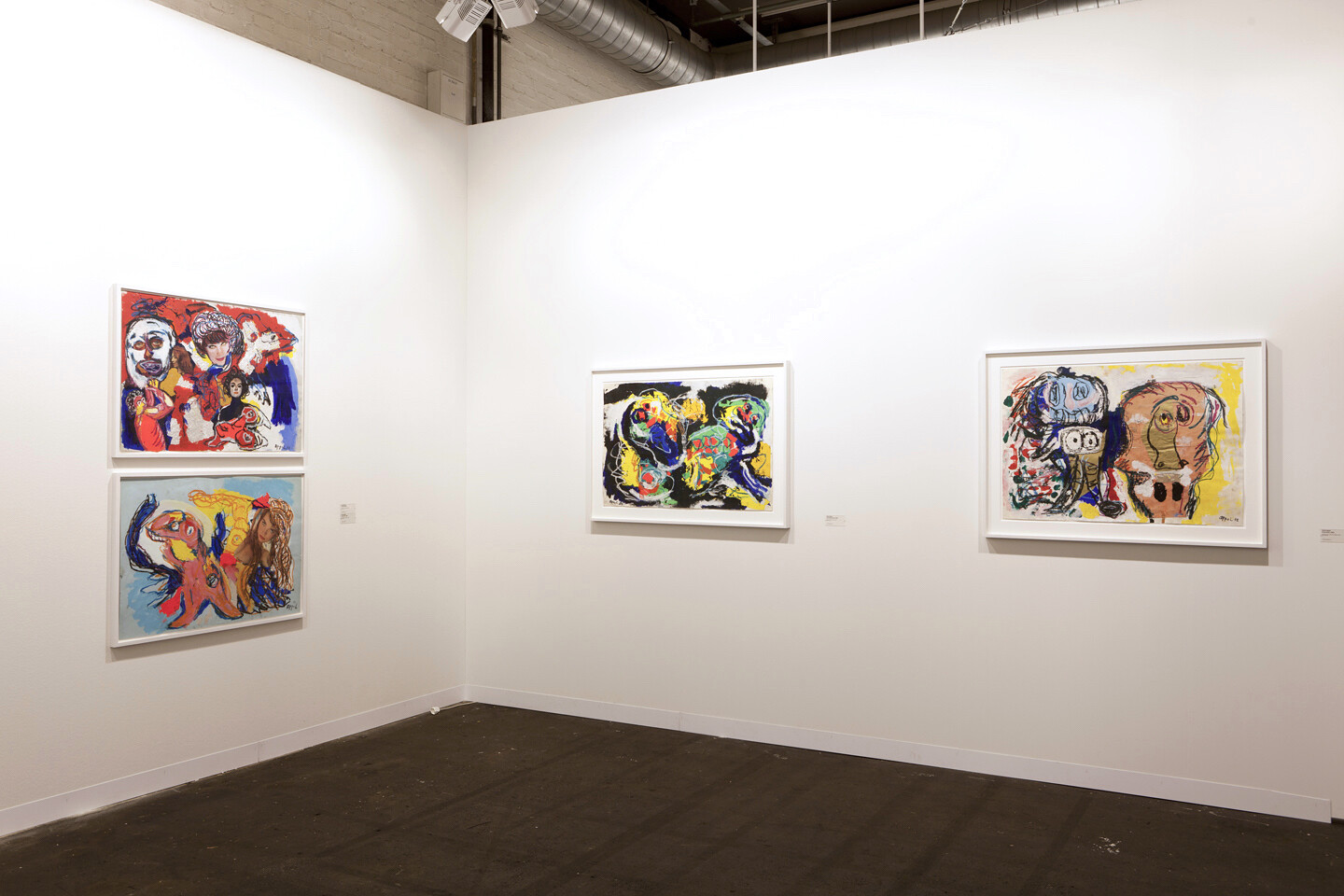June 13–16, 2019
Jahn und Jahn is pleased to present works on paper by the internationally acclaimed artist Karel Appel (1921 Amsterdam–2006 Zurich) who was co-founder of CoBrA and set new standards in art. With a focus on his collages from the 1960s drawn from the Karel Appel Foundation, the gallery illuminates a less represented, but art-historically significant part of his oeuvre and thus contributes to a rediscovery of this exceptional Dutch artist. Characterized by an unusual diversity and range of materials, Appel’s works on paper allowed him great flexibility and room for experimentation. Paper and cardboard fragments, press clippings, and other found objects enter into a lively dialogue with his powerful, animalistic formations in watercolor, gouache, and crayon. As the artist discovered collage for himself, he not only experienced a productive period in his painterly expressionism, but also found himself at the pinnacle of his career: Appel received several awards, e.g. the UNESCO Prize at the Venice Biennale (1954) and the Guggenheim International Award (1960), participated in documenta II and III (1959/64), and had major solo shows, such as a retrospective at the Stedelijk Museum, Amsterdam (1965).
On view at Jahn und Jahn, Munich
Baaderstraße 56 B und C
80469 Munich, Germany
Imi Knoebel: Tafelbilder (through June 26, 2019)
Imi Knoebel’s Tafelbilder (panel paintings) achieve their maximum effect through focused positioning and minimalist reduction. In addition to a diversity of colors, from gold leaf through to bright orange or dark blue, materiality and the application of paint contribute in particular to the complexity of these monochrome works. For more than five decades Knoebel has been dealing with the subject of painting, its function, and meaning. How can a traditional “Tafelbild” be interpreted in a contemporary way and thus expand the idea of painting? Knoebel was greatly inspired by the theories of Kazimir Malevich and his influential Black Square (1915) which marked a new starting point in painting. Grounded in abstract art, Knoebel has created series of works that explore questions of design, surface, and the structure of space, but also the relationship between work and viewer. Thereby he has demonstrated a keen awareness of color in terms of its nuances, variation, and rhythm.
Imi Knoebel (born 1940 in Dessau, lives and works in Dusseldorf) studied in Joseph Beuys’s class at the Kunstakademie Düsseldorf from 1964. He took part in the documenta 5-8 (1972–1987) and had solo shows in important museums and institutions, among them the Museum Haus Konstruktiv, Zurich; the Kunstsammlung Nordrein-Westfallen; K21, Dusseldorf; Kunstmuseum Wolfsburg, Wolfsburg; Neue Nationalgalerie and Deutsche Guggenheim, Berlin; Dia:Beacon, New York; Kestner Gesellschaft, Hanover; Haus der Kunst, Munich; Kunstmuseum Bonn, Bonn; and the Stedelijk Museum, Amsterdam. Fred Jahn has been working with the artist since 1971, at that time for Galerie Heiner Friedrich, and has shown his work numerous times.
Read more here.
Willi Baumeister (through June 26, 2019)
Willi Baumeister is considered an important representative of abstract painting and a significant source of inspiration for various art movements after 1945. The exhibition at Jahn und Jahn, which covers the years 1928 to 1955, not only reveals the artist’s preoccupation with the simplified human figure, but his interest in various subjects, such as Greek mythology, African and Chinese cultures, the archaic and the fantastic. Around 1943, Baumeister wrote the influential avant-garde text The Unknown in Art (published in 1947). This was the subject that he would explore all his life.
From 1927 to 1933 Willi Baumeister (1889–1955 Stuttgart) taught at the Frankfurter Kunstgewerbeschule, later the Städelschule, and took part several times in the documenta (1955, 1959 and 1964) as well as in the Venice Biennale (1948 and 1952). His works have been exhibited internationally and can be found in important public and private collections around the world. In direct cooperation with the Willi Baumeister Foundation in Stuttgart, regular exhibitions have taken place at the gallery since 2001.
Read more here.


